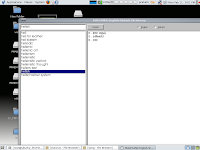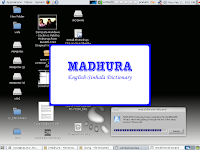I,m try to install ubuntu on the Linux.First i,m instal wine and next install Madura english sinhala Dictionary on the wine.it is very easy.these are the steps you want to follow.

Download Madura
- First you want to install wine.
- Doble click the madura setup icon
- Select the installation path
- Following setup instruction.

- Then you want to install Madura font to linux.I'm try to this in Ubuntu 7.10.In this OS there is folder call "share" -->usr/share
- There are font called "Madura.ttf".this font file move to the "share" folder.
This is the final view of Madura dictionary.


Download Madura
Comments
http://www.maduraonline.com